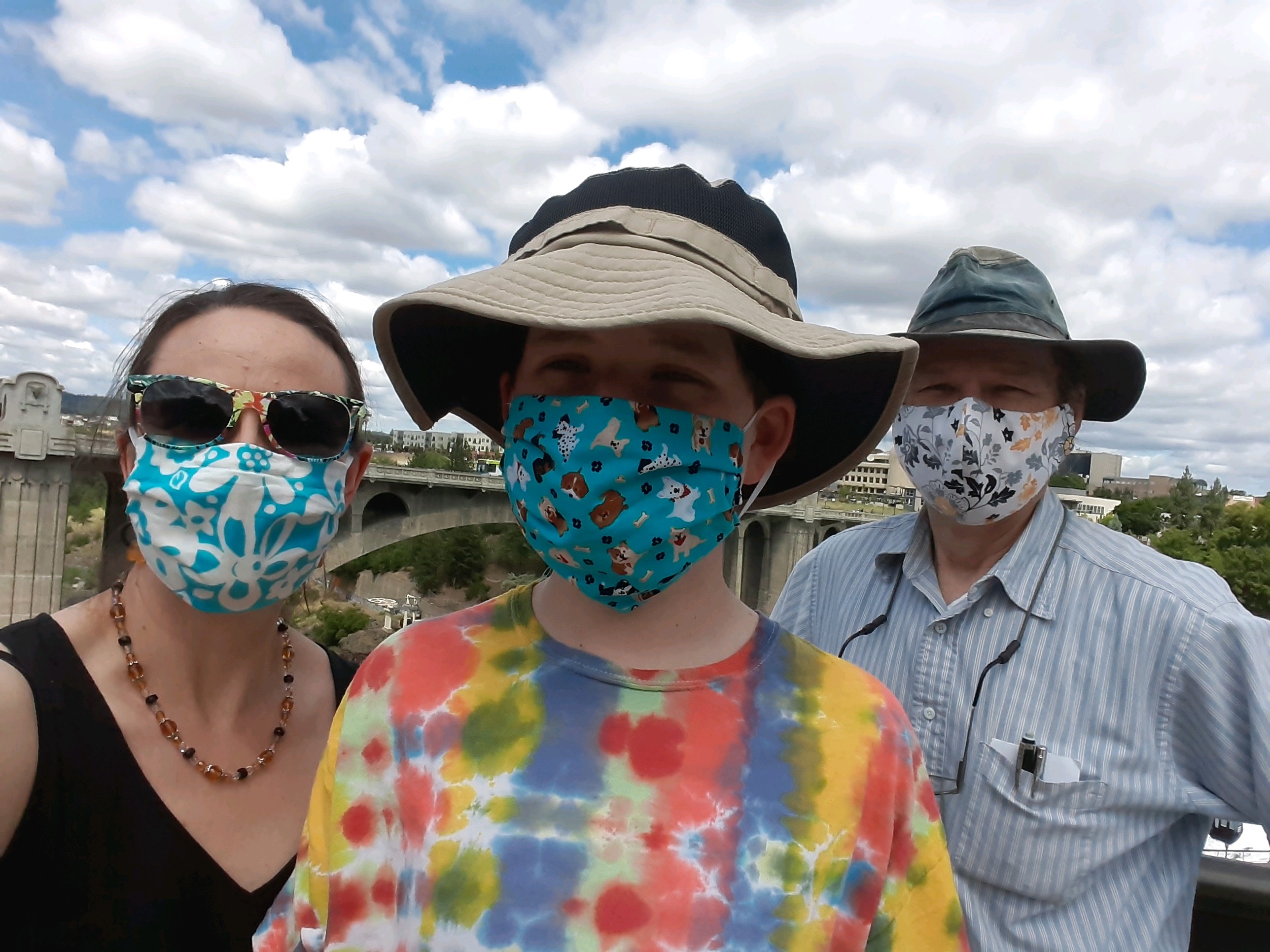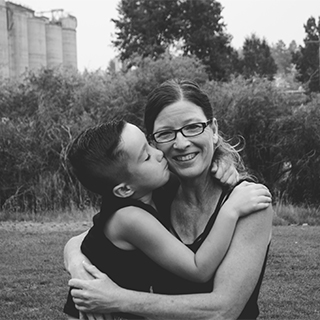A Parent’s Perspective: Navigating Face Coverings

By Elizabeth Cummings:
Elizabeth is a middle school special education teacher and mother of two boys from Kalispell, Montana. She serves on the Rural Institute Consumer Advisory Council and advocates for individuals with disabilities and their families.
Everyone is talking about masks. As the research on their effectiveness as a tool to battle the COVID-19 pandemic grows, so does the list of places requiring them. Montana recently joined the states with a mask mandate, perhaps raising questions for many families with an individual with a disability. I am a parent of a child with complex special needs and have had these thoughts going through my mind over the last months as well. Could my son Charlie ever wear a mask? How would I teach him? What does the new normal mean for my unique family?
Any discussion on the topic of face coverings should start with the acknowledgement that there are individuals whose disability may truly prohibit them from wearing one. People with disabilities show us the full diversity of the human experience, a gift we must respect. And one of the things my years as a special needs parent, teacher, and advocate have taught me is that there is a worthy exception to every good rule.
Considering this, it would have been easy to assume my son would be one of those exceptions. Charlie has a one-of-a-kind genetic disorder, intellectual disability, and autism. His autism is severe and has a major sensory component. Charlie can spend hours a day swinging just to regulate. This kid wearing a mask? Would that even be possible? But then I considered the bigger picture.
The Why
Children with disabilities are more likely to have other medical conditions, and so does my son Charlie. He has an immune disorder that could put him at higher risk for COVID-19 complications. His brother has a heart condition, and Charlie could act as a vector for the virus spreading it to his sibling. Like many others in Montana, we are on the state’s waitlist for services, and our family does not have respite help. My primary family support and outside source of care for Charlie is his grandparents, who are also at higher risk because of their age. And we spend more time in clinics and hospitals than most families, naturally interacting, socializing, and recreating with families who have vulnerable members we want to help protect.
I’ve learned, raising Charlie, that mindset is everything. I fully respect his limitations, but have come to understand that if I start with the assumption that he can learn a new skill with proper support, more often than not he amazes me. Learning to wear a mask was simply too important not to try.
And so we got to work.
The How
I started by reading social stories with Charlie about how he would start to see other people wearing masks. I wanted him to understand this social change in others before he tried it himself. We talked about the words “germ” and “virus” and why he would see people around him wearing face coverings now. We repeated these social stories often.
Next, I moved to modeling, one of the most powerful teaching tools. We started wearing masks around Charlie in the house, his most comfortable environment. As a young teenager, gender modeling is also important for Charlie. His primary male figure is his grandfather who wore a mask regularly when visiting Charlie to help him adjust.
When it was time for Charlie to try his own face coverings, he had started to become interested. I introduced new social stories, this time about wearing one himself, and I played to his special interests. He picked out his own fabrics to have some made (he loves dogs) and enjoyed shopping online for his favorite characters (Curious George). Charlie’s biggest special interest is elevators – I’m still on the hunt for that fabric, but if I ever find it, I’ll honor his unique fascination for sure!
This process was made easier by earlier work to help Charlie learn to wear a seatbelt, an adaptive riding helmet, and trying new types of foods. When learning those skills, I used a strategy called “shaping” where I reinforced each small step toward a new goal. Applied to face coverings, I might have used a motivator just for holding a mask at the beginning. Then for touching it to his face, trying it on for 30 seconds, a minute, and so on, building growth and reinforcing for each step of the process. Additional ideas are to try a face covering on a favorite stuffed animal or doll first. Some children might enjoy decorating their own fabric masks as an art project. Charlie loved taking pictures of himself in each mask to look back on and show others.
The Progress!
In some ways, my son’s autism worked as a strength as we adjusted to this new norm. His rule-based nature means that his tendency is to wear a face covering each and every time he’s in public. He regularly reminds those around him (including me!). We recently spent time in a children’s hospital out of state, and Charlie did great wearing his mask the whole trip. Now that they’re widely available, I’ll work on introducing some transparent styles to allow for more social cues and facial expressions.
Special needs parenting has been full of joys, challenges, and a lot of lessons. I never thought mask wearing would be a life skill that I prioritized. But once again, I’ve learned that when I keep my expectations high, even through the unexpected, my son will teach me just how much is possible.
Disclaimer:
The views and opinions expressed in this article are the author’s and do not necessarily reflect the official policy or position of the Montana Family to Family Health Information Center, the Rural Institute for Inclusive Communities, or the University of Montana.

